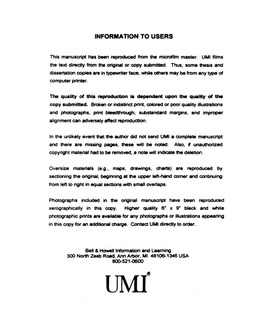| dc.contributor.advisor | Shrock, Dennis, | en_US |
| dc.contributor.author | Spencer, Merry Carol. | en_US |
| dc.date.accessioned | 2013-08-16T12:30:54Z | |
| dc.date.available | 2013-08-16T12:30:54Z | |
| dc.date.issued | 2000 | en_US |
| dc.identifier.uri | https://hdl.handle.net/11244/5965 | |
| dc.description.abstract | The purpose of this study is to examine the process of awakening the musician in young conductors, and to present strategies for teaching conducting through musicianship. A conducting curriculum is recommended that utilizes current and relevant learning theories, music education ideologies, and philosophies of the creative process and musical intelligence as they are applicable to the teaching and learning of conducting. The goal is to assist pedagogues with issues surrounding curriculum design so that students can emerge from their beginning conducting sequence as independent and communicative conductors. | en_US |
| dc.description.abstract | Chapter One of this study reviews current conducting textbooks, and recent and related research specific to conducting pedagogy, in an effort to discover how musicianship and creativity is perceived and taught in the beginning conducting curriculum. Chapter Two explores the concepts of creativity and musicianship, and their relationship to conducting, in a manner that is supported by cognitive scientists, educational psychologists, and art educators. In addition, Chapter Two presents a framework for conducting that identifies three main areas that can be taught and strengthened by applying the principles of creativity and musicianship. These areas are Knowledge, Technique, and Inherency/Artistry. This chapter also includes a discussion about the essence of communicative conducting in order to identify the necessary components of an effective conducting curriculum. | en_US |
| dc.description.abstract | Chapter Four recommends a specific curriculum with sample lessons that illustrate these principles in practice, and the final chapter offers a conclusion regarding this praxial approach to teaching conducting through musicianship. | en_US |
| dc.description.abstract | Chapter Three investigates curricular implications for teaching conducting through musicianship, and identifies and examines nine areas within the current and traditional approach that need attention and change. These are: (1) assessment, (2) creating context, (3) sequence of skills, (4) score study, (5) turning the score into a physical image, (6) technical function, (7) practicing the art, (8) channeling: teaching to varied learning styles, and (9) designing creative, problem-solving lessons. In addition, Chapter Three offers general strategies for implementing musicianship and creativity into the conducting curriculum. In so doing, this chapter assists in answering the question, "What are strategies for awakening the musician in a conductor?" | en_US |
| dc.format.extent | ix, 227 leaves : | en_US |
| dc.subject | Conducting Instruction and study. | en_US |
| dc.subject | Music. | en_US |
| dc.subject | Education, Music. | en_US |
| dc.title | Conducting pedagogy: Teaching through musicianship. | en_US |
| dc.type | Thesis | en_US |
| dc.thesis.degree | D.M.A. | en_US |
| dc.thesis.degreeDiscipline | School of Music | en_US |
| dc.note | Major Professor: Dennis Shrock. | en_US |
| dc.note | Source: Dissertation Abstracts International, Volume: 61-04, Section: A, page: 1335. | en_US |
| ou.identifier | (UMI)AAI9968102 | en_US |
| ou.group | Weitzenhoffer Family College of Fine Arts::School of Music | |
